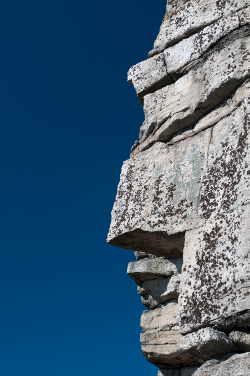A magazine where the digital world meets the real world.
On the web
- Home
- Browse by date
- Browse by topic
- Enter the maze
- Follow our blog
- Follow us on Twitter
- Resources for teachers
- Subscribe
In print
What is cs4fn?
- About us
- Contact us
- Partners
- Privacy and cookies
- Copyright and contributions
- Links to other fun sites
- Complete our questionnaire, give us feedback
Search:
Changing the face of the Earth

We tend to think of a jigsaw these days as being a gentle pastime – or a psychotic serial killer in the Saw movies. But being able to put the pieces together in one particular jigsaw has helped us understand the planet we live on and how it will look in the future.
Put it together
Way back in the 1500s a Flemish map-maker called Abraham Ortelius noticed something strange about the shape of the world. If you took the shapes of the continents and moved them around, they all seem to fit together. For example, South America kinda fits into the bend in the west side of Africa, just like jigsaw pieces. It wasn’t till the 1900s, when meteorologist Alfred Wagner added some significant extra layers to the puzzle, that scientists began to realise that all the land on the Earth had once been joined in a giant super- continent called Pangaea. Areas of ancient rock and mineral belts matched across the continents, the scars and debris caused by ancient icy glaciation were shared, and the fossil sequences were the same. These tell-tale fingerprints all helped to support the idea that today’s separate continents had once been joined together.
As if!
At first, as is always the way when new ideas come along, scientists didn’t believe it. However as time passed, and more information became available, the idea of continental drift became accepted. Studies in paleomagnetism, the study of the magnetic properties of rock, showed either the continents had moved or there were two North Poles. Since, well, there’s only one North Pole, it looked like maybe the continents really had moved. It wasn’t an easy ride, though. Most scientists at the time worked in the northern hemisphere, where the evidence was less obvious. More importantly no one agreed on how the continents had drifted apart in the first place. Continents didn’t move – you just had to look at them. See, nothing moves! It was only when the clever idea of plate tectonics came around that the final piece was put into the jigsaw. Plate tectonics was the discovery that we live on a load of floating plates – rocky rafts that drift around on the molten liquid at the core of the earth. These rafts could move when the squiggly lava contents below squeezed up through cracks, pushing them apart.
Coming soon to a planet near you
That’s the past, but what about the future? Continental drift happens, but at such a slow pace that humans never see it – even over generations. However it is possible to see the shape of the world to come. Computer scientists have created programs that mimic the way the plates will move over millions of years. Our future will definitely have a different shape as our continents drift, but predicted changes in sea level will also delete sections of familiar countries. The scientists may be showing us the possible faces of our future, but some of what it will look like is up to us.


